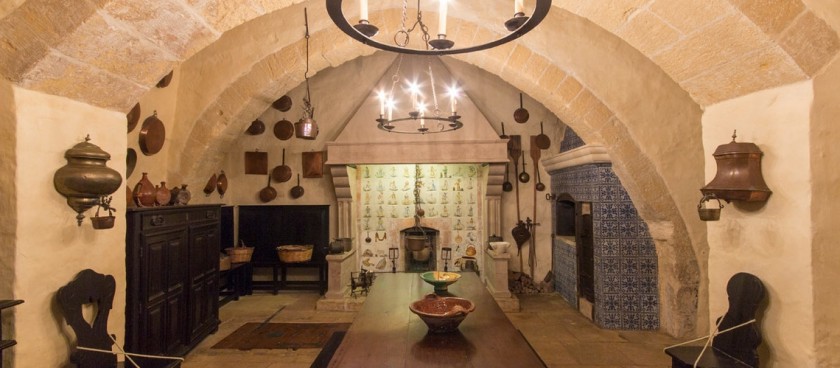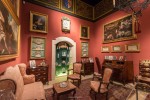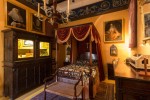- #MT42
- Villegaignon Street, Mdina MDN 1191, Malta
- +35621454512
- curator@palazzofalson.com
- http://www.palazzofalson.com/
- Working hours*:
Tuesday - Sunday
10:00 – 17:00
(last visit 16:00)
Closed: Mondays
The Museum can be opened for After Hour visits and Special events.
Closed on: New Year’s Day, Christmas Day, Good Friday, Easter Sunday. - Prices*:
Adult 10.00€ (free audio guide)
Students & ISIC card holders: 5.00€(free audio guide)
Senior citizen: 5.00€ (free audio guide)
Children: 0 – 5 years - no entry permitted,
6 – 12 years - FREE (accompanied and no audio guide) - * - opening and closing times as well as entrance prices, are subject to alterations without notice. Visitors are advised to check before visiting.
- 35.8870670, 14.4030920 Copy to clipboard Copy
-
#Museums
It was purposely built as a family residence by the Maltese nobility, and it is named after the Falson family. It is presently open to the public as a house-museum with seventeen rooms of historic domestic belongings and a number of antique collections.
The building is believed to have been built in around 1495, probably incorporating parts of a 13th-century building. This makes it the second oldest building in Mdina, after the ground floor of Palazzo Santa Sofia. During the rule of the Order of St. John, the building might have received Philippe Villiers de L'Isle-Adam, the first Grand Master in Malta. The building was further enlarged in the mid-16th century. Its architect is unknown, but the distinctive upper floor windows might be the work of Jacobo Dimeg.
Palazzo Falson was acquired by Olof Frederick Gollcher in the 20th century, and he restored and altered parts of the building. It is now owned by a foundation established by Gollcher, and since 2007 it has been open to the public as the Palazzo Falson Historic House Museum, which is managed by the Fondazzjoni Patrimonju Malti, a Maltese heritage foundation. It displays permanent collections which originally belonged to Gollcher, and occasionally other temporary exhibits from private collections.
The building was included on the Antiquities List of 1925, it has been a Grade 1 scheduled property since 1992, and is on the list of the National Inventory of the Cultural Property of the Maltese Islands.
History
The Falsone[b] family was one of the prominent families of medieval Mdina, and its members were often involved in the city's municipal affairs. The earliest recorded reference to the family dates back to 1299.
The site of Palazzo Falson was originally occupied by a building known as La Rocca. By the 13th century, a single-story house had been built, and eventually a synagogue existed on the site. According to Quentin Hughes, the ground floor of the present building was built in around 1495, probably incorporating parts of the synagogue. Changes to the façade, including a shift in the orientation of the building as well as the addition of a double serrated string course and the hood mould framing the main doorway were completed at this point. These features are typical of the Siculo-Norman style, prevalent in the period.
According to tradition, soon after the arrival of the Order of St. John in Malta, Grand Master Philippe Villiers de L'Isle-Adam visited the palace for a banquet after a ceremony in which he took possession of Mdina on 13 November 1530. L'Isle-Adam's visit to the Falsone residence in Mdina is documented by Giovanni Francesco Abela in his 1647 book Della Descrittione di Malta, and until recently, the residence in question was assumed to be Palazzo Falson. However, there is some uncertainty as who owned the palace at the time. Documents suggest that the building originally belonged to the Cumbo family, and that the main branch of the Falsone family never owned the palace. On the other hand, some sources claim that in the 16th century the building was owned by Ambrosio de Falsone, Head of the Town Council, and in 1524 it was inherited by his cousin, Vice-Admiral Michele Falsone. The latter is said to have made further changes to the building including the addition of mullioned windows on the second floor. These windows are sometimes known in Italian and Maltese architecture as bifora. The decorative windows were probably designed by the local architect Jacobo Dimeg (1464-1527). The palace's piano nobile is believed to have been added in the mid-16th century.
The building eventually passed to Matteo Falson, who was the Master of the Rod. He fled to Sicily in 1574 after being persecuted by the Inquisition for his Lutheran views. The palace was seized by the Inquisition and it eventually passed to the Cumbo-Navarra family.
In 1657, the palace belonged to Ugolino Cumbo Navarra, and on his death it was inherited by his aunt Guzmana Cassar. She passed the building to her nephew Federico Falsone, who was not a member of the main branch of the family and who probably never lived at the palace. The building eventually passed into the hands of the Muscati-Falsone-Navarra family, and by the 1920s it belonged to Count Francesco Palermo Navarra Bonici, a resident of Catania. Throughout the centuries a number of changes were made to the house, including a reduction in the size of the building by separating it into more than one tenement.
In 1927, Olof Gollcher and his mother purchased part of the palace from Count Navarra Bonici for £680, and he later bought the remaining part of the palace in 1938 for £550. Gollcher was an art collector, and he transferred his collections into the palace, which he called The Norman House since at the time its architectural features were considered to be Siculo-Norman.[4] In 1929, the palace's façade was restored, but it was also modified in the process. Parts of the interior were also altered. The most significant changes Gollcher made can be seen in the courtyard where he built a Siculo-Renaissance inspired external staircase, as well as a pseudo Siculo-Norman fountain and a Byzantine-Romanesque folly.[9] He also added a pointed-arched doorway to complement the main portal of the façade.
The palace is scheduled as a Grade 1 national monument, and it is also listed in the National Inventory of the Cultural Property of the Maltese Islands.


